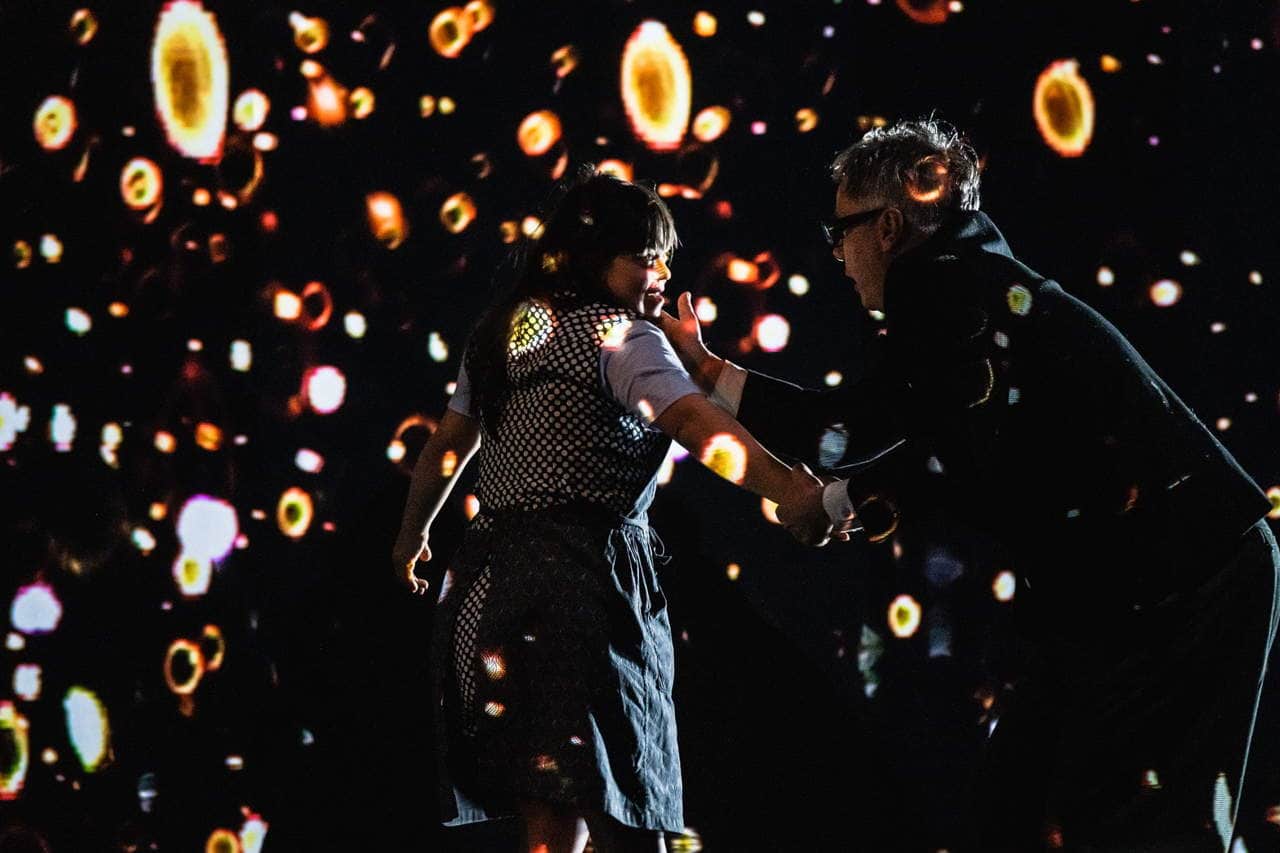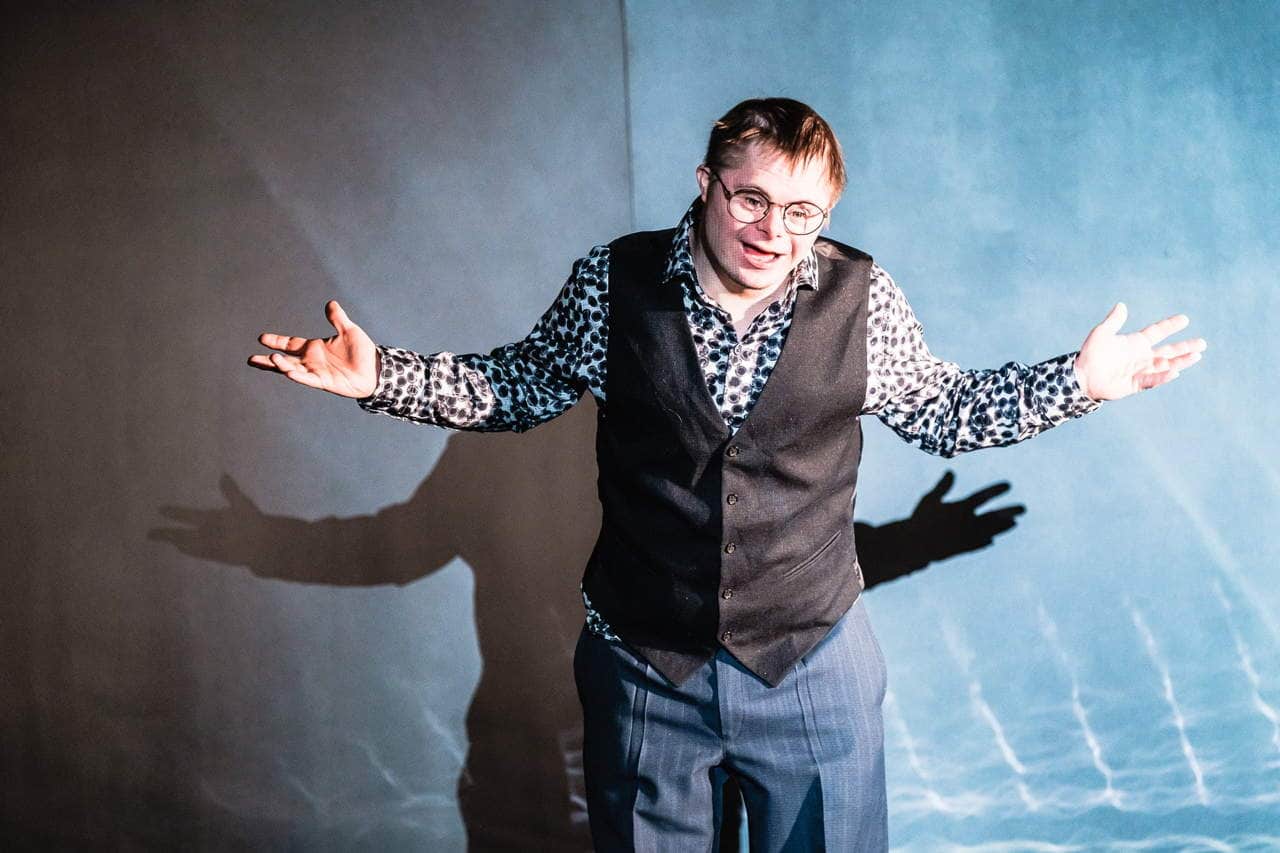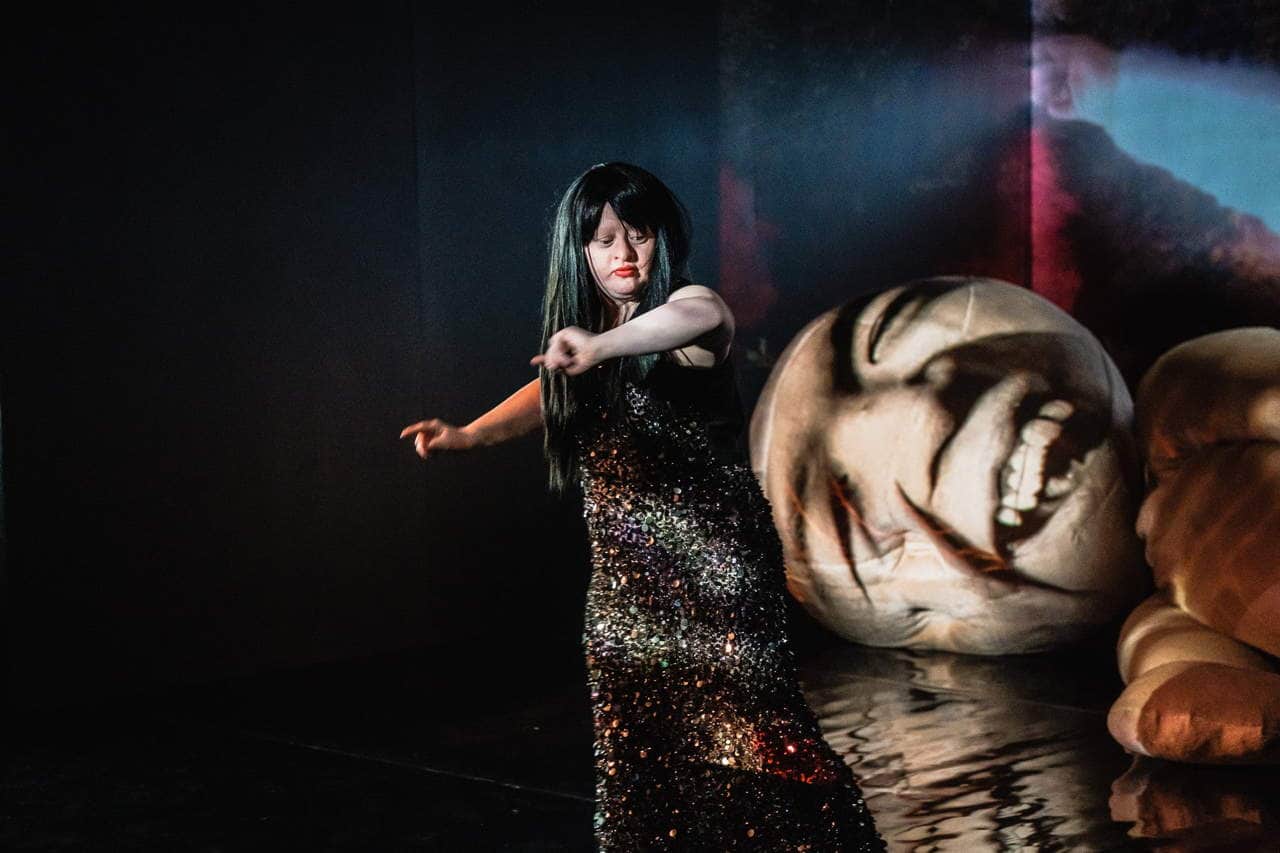Regional Express Directed by: Milan Peschel
(It Burns) Directed by: Jacob Höhne
nach Alban Berg Directed by: Jacob Höhne
oder Die Sprache der Blumen Directed by: Gisela Höhne
#createyourown Directed by: Sandra Rasch
Directed by: Lilja Rupprecht
“Fear! – Sorrow! – You know nothing of these!”
They run, creep, groan, and curse. They gnaw, fight, and yearn. Gerhart Hauptmann’s “Rats” live closely packed in a Berlin tenement. They’re not animals, however, but instead people – in every way: There’s Pauline, who is pregnant and would rather throw herself into the river than bring up her child on her own. There’s the former theater manager Hassenreuther, who has set up a costume store in his building’s attic, where he also gives acting lessons. Jette John’s husband, Paul, is working a construction job in Hamburg and is therefore not around. The two lost a child and would like nothing more than to have another baby. That’s why Jette secretly meets with the pregnant Pauline up in the dusty attic and suggests they make the following deal: Pauline will be paid to carry the baby to term and give birth, and Jette will then act is if the baby is hers. Pauline and Jette aren’t the only ones who use the building’s attic as a secret meeting place, however – and Hassenreuther’s daughter, Walburga, therefore suddenly shows up. She’s looking for her lover, Erich, who is studying theology but really only wants one thing in life: to be an actor. In the meantime, Hassenreuther – the acting teacher – has arranged for a rendezvous with a stage diva up in the attic. A certain Bruno can be seen in the semi-darkness of the tenement’s elevator; everyone who meets him for the first time is afraid of him. Finally, there’s the neighbor’s daughter, Selma. Although she herself is not much older than a child, she still tries to take care of everyone and everything in the building.
Die Ratten is Gerhart Hauptmann’ most performed play. The tragicomedy addresses life issues that are still relevant more than one hundred years after the play celebrated its premiere; issues like unwanted pregnancies, the unfulfilled wish for a baby, forbidden love and incredible desire, benevolence and emancipation, parenting – and theater and ways of looking at art, life, and the world.
Die Ratten marks the fourth time that director Lilja Rupprecht and her team have worked with the RambaZamba Ensemble, having previously collaborated with the players on “Antigone,” “The Lady from the Sea,” and “Ode” (at the Deutsches Theater Berlin). Together, Rupprecht and the Ensemble tell the story of Die Ratten as a parable of the best intentions and the worst possible twists. The title may be “Rats,” but it’s most definitely a human story.




„Auch für diese Arbeit verlässt sich die Regisseurin auf die Spielkunst des Ensembles. Und: auf eine atmosphärische Dichte, die durch die klug reduzierte Bühne einerseits, andererseits durch das Nebeneinander von Tragik und Komik zustande kommt. Etwas, das RambaZamba besonders kann, was die Darsteller:innen besonders können, die sich Hauptmanns Sätze im wahrsten Sinne vornehmen und ihnen nachspüren, sie teilweise wiederholen, wenn sie beim ersten Mal nicht so rauskommen, wie es sich für sie richtig anfühlt. All das gibt der Inszenierung eine eigenwillige, einfühlsame Chuzpe, die diesen Hauptmann zu ihrem Hauptmann macht.“ Stephanie Drees, nachtkritik.de